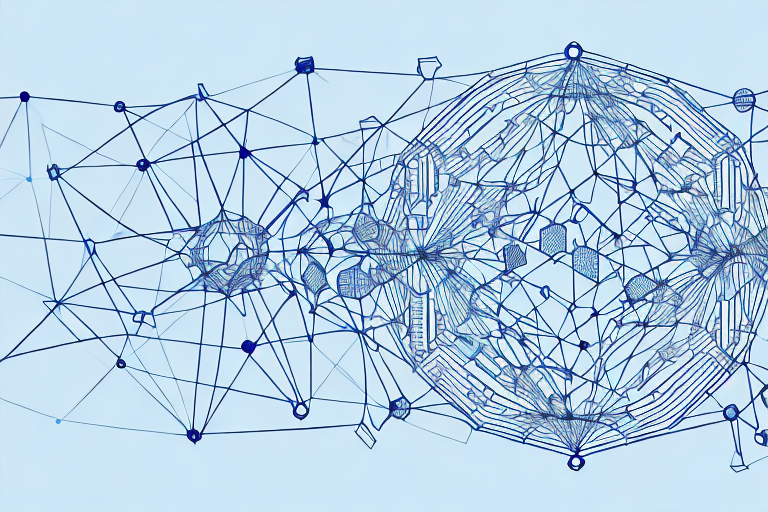Edge Computing
By: A Staff Writer
Updated on: May 27, 2023

In today’s rapidly advancing technological landscape, businesses continually look for ways to stay ahead of the competition. One of the newest breakthroughs in this field is edge computing, which has gained traction recently as an alternative to traditional cloud-based systems.
Edge computing has become increasingly popular in recent years as the number of connected devices and sensors has grown exponentially. These devices generate vast amounts of data, which can be challenging to manage and process using traditional cloud-based approaches. By using edge computing, businesses can reduce the amount of data that needs to be transmitted over the network, which can help to lower costs and improve performance. One of the critical benefits of edge computing is its ability to enable real-time data analysis. This is particularly useful in applications where split-second decisions need to be made, such as in autonomous vehicles or industrial automation systems. These systems can respond quickly to changing conditions without human intervention by processing data at the edge. Another advantage of edge computing is its ability to improve data security. By keeping data processing and analysis local, businesses can reduce the risk of data breaches or cyber-attacks. This is because sensitive data is not transmitted over the network, where hackers could intercept it. In addition to these benefits, edge computing can also help to reduce network congestion and improve overall network performance. By processing data locally, businesses can reduce the amount of data that needs to be transmitted over the network, which can help to reduce latency and improve overall network speed. Overall, edge computing is an exciting new technology that has the potential to revolutionize the way that businesses process and analyze data. By leveraging the power of localized computing resources, companies can improve performance, reduce costs, and enhance data security, all while enabling real-time data analysis and decision-making.
The Benefits of Edge Computing for Enterprises
Edge computing is a relatively new concept that has been gaining popularity recently. It involves processing data closer to the source rather than sending it to a central location for processing. This approach has several key benefits for businesses, including:
Improved Networking Speed
One of the most significant advantages of edge computing is improved networking speed. By processing data closer to the source, edge computing reduces the time it takes for data to travel across a network. This can lead to faster processing times and better customer experiences, as data can be delivered more quickly and efficiently.
For example, consider a retail store with sensors to track inventory levels. With edge computing, the data from these sensors can be processed on-site rather than sent to a central location for processing. This can lead to faster updates to inventory levels, which can help the store keep better track of its stock and avoid running out of popular items.
Reduced Risk of Network Failure
Another benefit of edge computing is that it can reduce the risk of network failure. By processing data closer to the source, edge computing reduces the amount of data that needs to be transmitted over a network. This can help to reduce the strain on the network and minimize the risk of network outages or other issues.
For example, consider a manufacturing plant that uses sensors to monitor equipment performance. With edge computing, the data from these sensors can be processed on-site rather than sent to a central location for processing. This can help reduce the amount of data that needs to be transmitted over the network, reducing the risk of network failure and ensuring that the plant can continue to operate smoothly.
Enhanced Customization Options
Edge computing can also provide enhanced customization options for businesses. For example, companies can tailor their data processing to specific devices or applications by processing data closer to the source. This can increase efficiency and reduce costs, as companies can optimize their operations more effectively.
For example, consider a healthcare provider that uses wearable devices to monitor patient health. With edge computing, the data from these devices can be processed on-site rather than sent to a central location for processing. This can allow the healthcare provider to tailor its data processing to the specific needs of each patient, which can lead to more accurate diagnoses and better treatment outcomes.
In conclusion, edge computing offers several key benefits for businesses, including improved networking speed, reduced risk of network failure, and enhanced customization options. As more companies adopt this approach to data processing, we can expect to see even more benefits emerge in the years to come.
The Growing Popularity of Edge Computing
The popularity of edge computing has grown significantly in recent years, mainly due to the proliferation of the Internet of Things (IoT) devices. As these devices generate more data, there is a greater need for localized processing power to handle the data promptly and efficiently.
However, the benefits of edge computing go beyond just faster processing times. By processing data locally, edge computing can help reduce latency and improve overall system performance. This is especially important for applications that require real-time data analysis, such as autonomous vehicles or smart cities.
Another advantage of edge computing is increased security. By keeping data processing closer to the source, edge computing can help reduce the risk of data breaches and cyber-attacks. This is particularly important for industries such as finance and healthcare, where sensitive data must always be protected.
It’s worth noting that while edge computing has been adopted primarily in industries such as manufacturing and healthcare, it is now being embraced by a much broader range of industries, including retail, finance, and transportation. In the retail sector, for example, edge computing can analyze customer data in real-time, allowing retailers to personalize their offerings and improve the overall customer experience.
Similarly, edge computing can be used in the transportation industry to process data from sensors in real time, helping to improve traffic flow and reduce congestion. Again, this can significantly impact both the environment and the economy, as it can help reduce carbon emissions and increase productivity.
Overall, the growing popularity of edge computing is a testament to its many benefits. As more and more industries adopt this technology, we can expect to see even greater advances in data processing, security, and real-time analytics.
Enterprise Use Cases for Edge Computing
 The growing popularity of edge computing has led to a wide range of use cases in the enterprise world. This technology has the potential to revolutionize the way businesses operate by bringing computation and data storage closer to the devices and sensors that generate them. This allows for faster and more efficient processing of data, which can lead to improved decision-making and cost savings.
The growing popularity of edge computing has led to a wide range of use cases in the enterprise world. This technology has the potential to revolutionize the way businesses operate by bringing computation and data storage closer to the devices and sensors that generate them. This allows for faster and more efficient processing of data, which can lead to improved decision-making and cost savings.
One of the most promising use cases for edge computing is in manufacturing. By processing data from sensors on factory floors in real-time, companies can identify and address operational issues before they become significant problems. This can increase efficiency, reduce downtime, and improve product quality. For example, edge computing can monitor a production facility’s temperature and humidity levels, ensuring that products are manufactured optimally.
Edge computing can also be used in the transportation industry to optimize routes and improve fuel efficiency. By analyzing vehicle data in real-time, companies can identify and adjust the most efficient routes as needed. This can lead to reduced fuel consumption, lower transportation costs, and improved delivery times. For example, edge computing can track the location, speed, and fuel consumption of a fleet of trucks, allowing companies to optimize their delivery schedules and reduce fuel waste.
In retail, edge computing can be used to personalize customer experiences. For example, companies can tailor promotions and recommendations to specific customers using in-store sensors’ data. This can lead to increased customer satisfaction, loyalty, and sales. For example, edge computing can track customers’ movements through a store and offer personalized promotions based on browsing history and purchasing habits.
Another use case for edge computing is in healthcare. By processing data from medical devices in real time, doctors and nurses can make more informed decisions about patient care. This can lead to improved patient outcomes and reduced healthcare costs. For example, edge computing can monitor a patient’s vital signs and alert medical staff if abnormalities occur.
The potential use cases for edge computing in the enterprise world are vast and varied. As this technology evolves, we will likely see even more innovative applications.
How Should Companies Implement Edge Computing?
When implementing edge computing, companies should consider several key factors. One crucial factor is a robust infrastructure supporting localized data processing. This will require investments in localized data centers, servers, and other processing resources.
In addition to infrastructure, companies should also consider the potential benefits of edge computing. For example, localized data processing can lead to faster data analysis and decision-making and reduced network latency and bandwidth usage.
However, companies should also consider their security protocols when implementing edge computing. Since data is processed locally, there is a greater risk of security breaches. Robust security measures like encrypted data transmissions can help mitigate this risk.
Another important consideration for companies is the need for skilled personnel to manage and maintain edge computing systems. This may require additional training or the hiring of specialized personnel.
Furthermore, companies should consider the scalability of their edge computing infrastructure. As the amount of data being processed increases, the infrastructure must be able to handle the increased workload. This may require periodic upgrades or expansion of the infrastructure.
Finally, companies should also consider the potential impact of edge computing on their overall IT strategy. As a result, edge computing should be integrated into the broader IT strategy to ensure it aligns with the company’s goals and objectives.
Potential Challenges and Pitfalls of Edge Computing
While the benefits of edge computing are clear, there are also potential challenges and pitfalls to be aware of. One primary concern is the risk of vendor lock-in, as edge computing requires specialized hardware and software that may be proprietary or difficult to replace.
This can be particularly problematic in industries where data security is paramount. For example, in the healthcare industry, patient data must always be kept secure and confidential. However, suppose a healthcare provider is locked into a specific vendor for their edge computing needs. In that case, they may be at risk of a security breach if that vendor experiences a data breach or other security vulnerability.
Another potential challenge of edge computing is the need for IT staff with specialized expertise in the technology. This can be costly and difficult to attract, particularly in areas with relatively new technology. In addition, as edge computing continues to grow in popularity, there may be a shortage of qualified IT professionals who can manage and maintain edge computing systems.
Additionally, edge computing can be complex and challenging to integrate with existing IT infrastructure. This can lead to compatibility issues and delays in implementation, which can be frustrating for businesses looking to take advantage of the benefits of edge computing.
Finally, there is the challenge of managing and analyzing the large amounts of data generated by edge computing devices. This requires specialized software and analytics tools, which can be expensive and challenging.
Despite these challenges, the potential benefits of edge computing are significant, and many businesses are already reaping the rewards of this technology. By understanding the potential pitfalls and challenges, companies can take steps to mitigate these risks and ensure a successful implementation of edge computing.
The Future of Edge Computing
 The future of edge computing is an exciting and rapidly evolving landscape. With the Internet of Things (IoT) explosion and the ever-increasing demand for real-time data processing, edge computing has become a critical component of modern business operations.
The future of edge computing is an exciting and rapidly evolving landscape. With the Internet of Things (IoT) explosion and the ever-increasing demand for real-time data processing, edge computing has become a critical component of modern business operations.
One of the most significant advantages of edge computing is its ability to process data locally, which reduces latency and improves overall system performance. This is particularly important in industries that require real-time data analysis, such as healthcare, finance, and transportation.
Another benefit of edge computing is its potential to reduce network congestion and bandwidth usage. By processing data locally, edge devices can reduce the amount of data that needs to be transmitted over the network, leading to faster and more reliable data transfer.
As edge computing continues to mature, we expect to see more standardized approaches to implementation and management. This will make it easier for companies to adopt edge computing and ensure interoperability between different systems and devices.
However, there are also some challenges associated with edge computing. One of the most significant is the need for robust security measures to protect against cyber threats. With edge devices outside traditional data centers, they can be more vulnerable to attack, making security a top priority for companies implementing edge computing.
Another challenge is the complexity of managing and maintaining edge devices, particularly in large-scale deployments. Companies must invest in qualified personnel and specialized tools to ensure their edge computing systems run smoothly and efficiently.
In conclusion, the future of edge computing is bright, with significant growth expected in the years ahead. While there are challenges to be addressed, the benefits of edge computing make it a compelling option for businesses looking to improve their data processing and analysis capabilities. Companies considering edge computing should carefully weigh the benefits and risks and seek qualified partners to help navigate this emerging field.